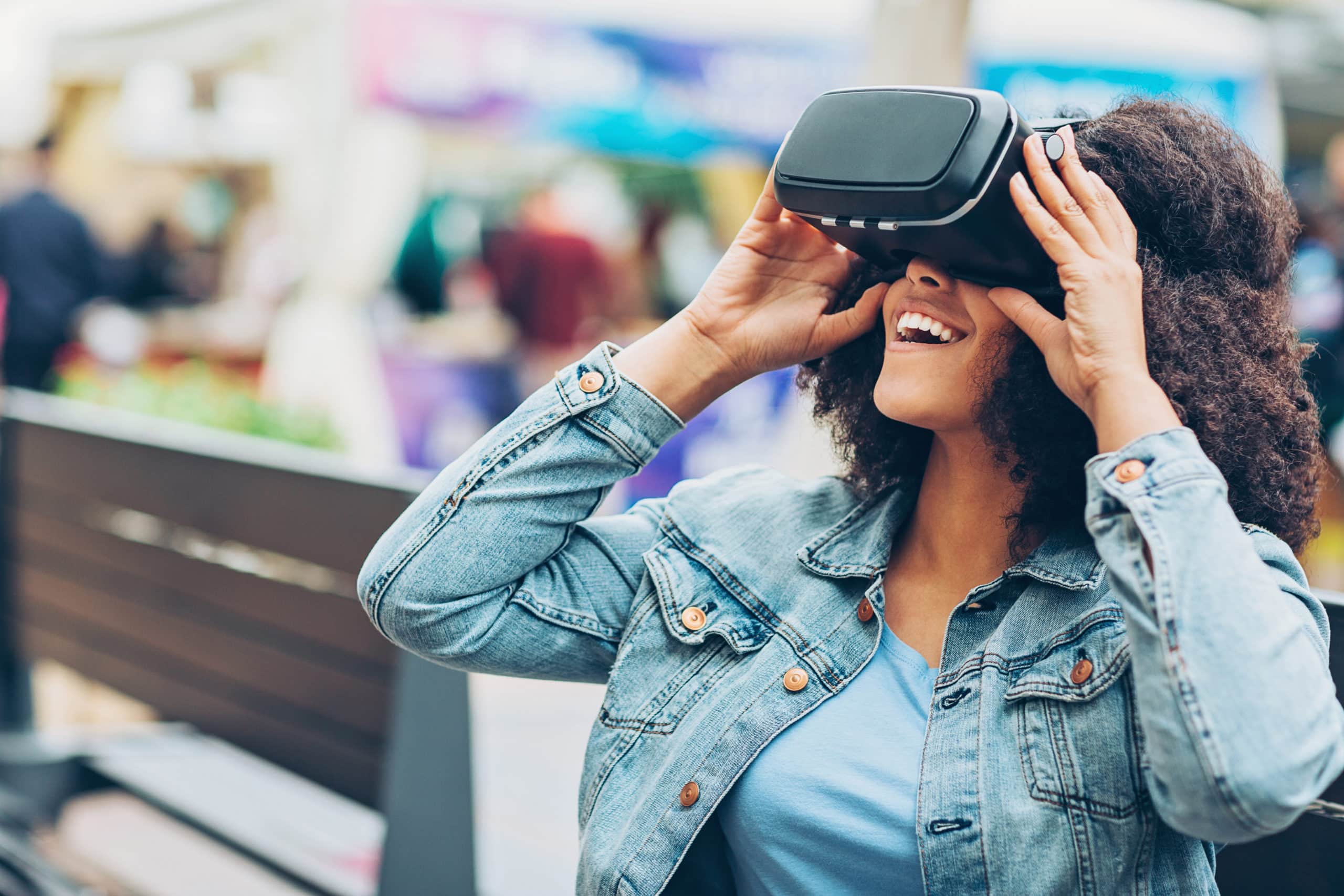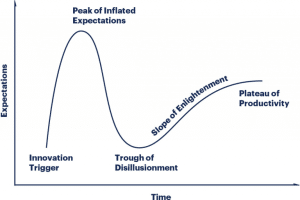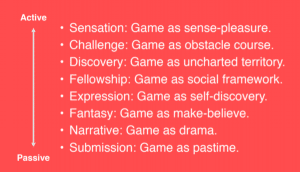
The Resurgence of AR and VR Content in a Post-Pandemic World
When people hear the terms augmented reality (AR) and virtual reality (VR) their minds tend to think futuristically. But the truth is, AR and VR content is here — and it’s not even new.
AR and VR existed in their earliest forms almost 200 years ago (you read that right) when Charles Wheatstone invented the stereoscope in 1838, using separate images for each eye to create a 3D image effect.
Over the next century, AR and VR hit milestones like the first novel predicting AR/VR technology as we now know it (1935), the first VR machine (1956), and the first VR headsets (1960s and 1970s). Advancing computer technology in the 1980s accelerated AR and VR tech developments and by the 90s people could buy VR headsets to use at home or watch sports games on networks using AR to enhance viewing.
By the 2010s, people were using AR on their smartphones (remember Pokémon GO?) and AR and VR content was all around us. Brands across industries incorporated it into their customer experiences — think VR house tours on real estate web listings, AR-powered virtual dressing rooms where people can “try on” clothes before they buy them, and 3D views of just about any location in the world from Google Maps.
But despite these advances, VR and AR content never quite managed to gain widespread consumer adoption. Generally viewed as a novel but not-totally-necessary technology, it remained on the fringes even as its capabilities got more and more refined.
Until 2020, that is, and a world of socially-distanced and fully-digital customer interactions that no one could have anticipated.
Quick Takeaways
- The pandemic has reinvigorated the adoption of AR and VR technologies.
- AR and VR content is having a transformative effect on the customer experience across industries.
- Customers now expect full, interactive experiences — even online.
- Content marketers can use AR and VR to jump from simply telling a brand story to putting customers right in the middle of it.
AR and VR — The “Before”
Before the pandemic, AR and VR content was stuck in what techies call the “trough of disillusionment” — a make-or-break adoption phase that emerging technologies go through when experimental and early-adopter implementations fail to meet the initial hype.

The technology and successful use-cases were out there for AR and VR content, but it struggled with the chicken-and-egg syndrome not uncommon in the tech world. Users and developers simultaneously waited for the other to “go first.”
Without enough users purchasing AR/VR headset hardware, developers saw no reason to develop high volume content. Without engaging content, users saw no reason to buy expensive equipment.
As a result, despite attempts from mainstream tech giants like Google and Facebook, VR and AR content failed to see widespread adoption.
That all changed with the onset of the pandemic in early 2020. Now, what had been previously viewed by consumers and many businesses as a fringe technology was their only pathway to the one thing they were missing: real, interactive experiences.
Creating a New Type of Experience
The events of the past year have brought on a perfect storm of factors that demand what AR and VR can offer: virtual experiences that simulate those in the “real” world. Left with no other option, brands and consumers alike looked to AR and VR technologies to carry out interactions they otherwise would have done in person.
The result? Brand new types of experiences are emerging that look likely to stick around well into a post-pandemic era. Here’s are some ways it’s happening across industries:
Retail
“Try before you buy” has taken on a whole new meaning. Using AR and VR technology, consumers can try on everything from apparel to jewelry to makeup without ever entering a store.
Retail brands are taking it a step further and creating totally virtual shopping experiences with updated inventory by season or consumer preferences. Using AR and VR, shoppers can peruse virtual storefronts and displays that mimic real in-person shopping experiences.
Education
In 2020, AR and VR technology became essential perhaps no place more than in the world of education, where millions of students were faced with learning from home with no notice or time to prepare.
Teachers and students struggled with the challenges of virtual engagement. VR and AR presented solutions in the form of interactive learning tactics like VR field trips, gamification of practical tasks, and enhanced classroom environments that lessen outside distractions.
Healthcare
AR and VR technology have promise to enhance healthcare from both a patient and provider perspective in ways likely to long-outlast pandemic conditions.
In the absence of in-person visits to the doctor, AR and VR offered vehicles for new ways of operating. Tools like self-guided diagnostics treatment and interactive maps to nearby healthcare facilities kept healthcare available to those who needed it.
At the same time, experimental tools for training technical skills ranging from triage tasks for nurses and front-line care staff to complex procedures for surgeons have proven their efficacy and long-term value.
Travel
Travel took perhaps the hardest hit of all during the pandemic as worldwide lockdowns and travel freezes put the entire industry on hold.
While nothing could replace the lost revenue tourism generates, entirely new avenues of opportunity have emerged as hotels, museums, tourist attractions, and entire countries turned to AR and VR to (at the very least) stay engaged with consumers until actual travel could resume.
Immersive experiences remained possible for consumers even as they were confined to their homes in the form AR- and VR-powered self-guided tours, 360 views of vacation destinations, and simulated attractions like zip lines or roller coasters.
While AR and VR will never replace actual vacations. But they do have exciting promise to expand access to places a person might want to see but will never travel to in person (like a VR tour of the Louvre) or serve as marketing tools for travel agents and tourist destinations by creating immersive preview experiences (i.e. VR views of potential destinations as people decide where to travel).
This YouTube channel already offers VR tours of more than 25 tourist cities and destinations around the world.
AR and VR Content Opportunities
Customers are emerging from a post-pandemic world with the expectation that they won’t just read or watch online, they’ll experience.
Using AR and VR, content marketers can make the jump from simply telling a brand story to customers to putting them right in the middle of it. We already know that regular visual content significantly increases customer engagement, so it’s safe to say a fully interactive AR or VR experience will intensify this impact even more.
Noble Digital CEO Allen Martinez tells us how we can do this using the same approach used by video game creators to engage people on a spectrum of levels.
One key takeaway from Allen’s presentation is that while content marketers can take the same approach as video game creators, we don’t have customer attention for nearly as long. Customers aren’t arriving on a website with the expectation of spending hours there.
Instead, we need to figure out how to take what we need to say and put it in shorter, more easily digestible story bites.
Here’s a quick overview of Allen’s gaming framework for storytelling with AR and VR:

Think first about which of these strategies aligns best with the story your brand needs to tell to sell your product.
Looking to build a connection between your customers? Create an interactive experience people can do together (like retail brands using social apps to let customers shop virtually with friends).
Want to encourage customers to visit a physical location? Provide a self-guided tour (like travel agents offering VR previews of vacation destinations).
You’ll have to get creative (but that’s our job, right?) and enlist the help of AR and VR professionals who can help you get the technology right (implementing glitchy experiences be worse than not using it at all).
But elevated customer expectations and the opportunity to create unique, differentiating, brand-specific experiences leave little room for marketers to ignore AR and VR if they want to stay competitive in a post-pandemic world.
If you’re ready to explore cutting edge content marketing strategies, explore our Content Builder Services or schedule a free consultation today.






